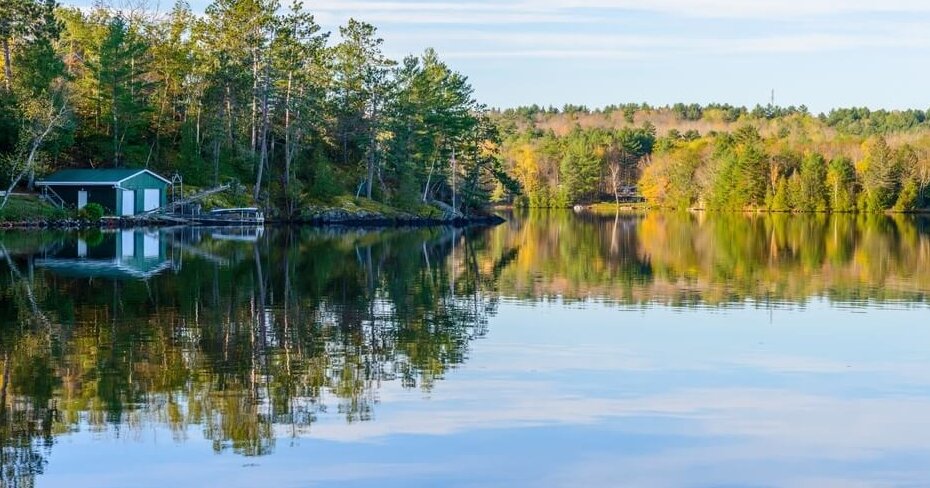How does cottage insurance work in Canada?
By: Michelle Bates on April 18, 2024
If you’re fortunate enough to have a seasonal property to escape to, maintaining and protecting it should become second nature to you. Cottages, secondary homes, and recreational properties tend to have unique quirks that may differ from your primary home. That means each will have an insurance policy that caters to its potential perils. Here’s an overview of what is and isn’t covered by seasonal property insurance.
At a glance:
What is recreational property or cottage insurance?
Recreational property or cottage insurance is a policy designed specifically for your secondary, seasonal home. It’s typically added on to your primary home insurance policy with the same insurance provider. But you can also insure your cottage with a different provider under a separate policy if you decide to shop around for property insurance.
When setting up this policy, you’ll have to inform your insurer of the following:
- What months you occupy the dwelling,
- Whether you intend to rent it out, and
- How many parties have ownership over the property.
These and other factors can affect your premium and coverage type. Anyone who co-owns the property within your family or social circle must also be listed on the cottage insurance policy to avoid a denied claim.
Aspects like the property’s location, size, age, building materials, features (think hot tubs, wood-burning stoves, and fire pits), and security systems can all impact what insurance rate you pay and how much coverage is required. Typical cottage insurance premiums can range from hundreds to thousands of dollars per year in Canada.
What does recreational property insurance cover?
Recreational property insurance policies provide less coverage than a standard home insurance policy because they’re occupied less often. That's why it's common for a cottage to have named perils coverage. That includes specifically named risks like fire, explosion, smoke damage, sudden water damage, falling objects, and theft.
This coverage protects both the structure of your cottage and your belongings inside of it. However, you can choose to add more perils to your coverage list or extend coverage limits for certain items like watercrafts.
All risks or comprehensive coverage is less common for seasonal properties and may not be an option with some insurance providers.
Lastly, the third-party liability coverage on your primary residence extends to your secondary property and covers injuries on your property and any damage you may cause to someone else’s property.
Read more: How is fault determined in the world of home insurance?
What is not covered by seasonal or recreational property insurance?
Most seasonal property insurance policies exclude a range of different perils, including:
- Losses caused by a backed-up sewer or septic tank
- General wear and tear
- Frozen pipes
- Damage caused by rodents, animals, and pests
- Damage to fences
- Food in freezer due to a power outage
- Garden equipment
- Plants and greenery outside of your cottage
- Gradual damage that was neglected
- Earthquakes and landslides
Fortunately, there are just as many optional coverages you can add on to your policy so that your unique concerns are addressed. You can add coverages like:
- Sewer backup insurance
- Overland flood insurance if you’re at risk
- Detached outdoor structure protection for sheds, boathouses, gazebos, etc.
- Large boat coverage
- ATV and snowmobile insurance
- Food loss due to power outage
- Extended contents insurance
When in doubt, explain to your insurer what you’d like covered or have them list all available add-ons so you can identify any potential gaps in your coverage.
Related: Is your septic tank covered by home insurance?
When should you opt for a different form of property insurance?
The details of your property matter when it comes to insuring a second home. For example, many insurance providers will offer different coverage depending on whether you’re able to visit a property throughout the year (secondary property insurance) or only a season or two per year (seasonal insurance).
If you regularly rent out or plan to rent out your additional property seasonally, you may need a commercial policy instead of a standard cottage insurance policy. This will ensure you have the right liability coverage in place for short- or long- term renters. Failing to disclose a cottage rental can completely void your cottage insurance policy.
And if you live in your cottage year-round, you’ll have to notify your insurer promptly. It will become your primary residence and will require an updated policy which is likely to alter your premium.
In any scenario, it’s best to lay out the facts for your insurance professional accurately and they will know how to classify your policy. Keeping your provider informed of any changes that arise is key to maintaining seamless cottage insurance coverage.
Related: 4 common summer home insurance claims — and how to avoid making them
Save 20% on average on home insurance
Compare quotes from 50+ Canadian providers in 3 minutes.


